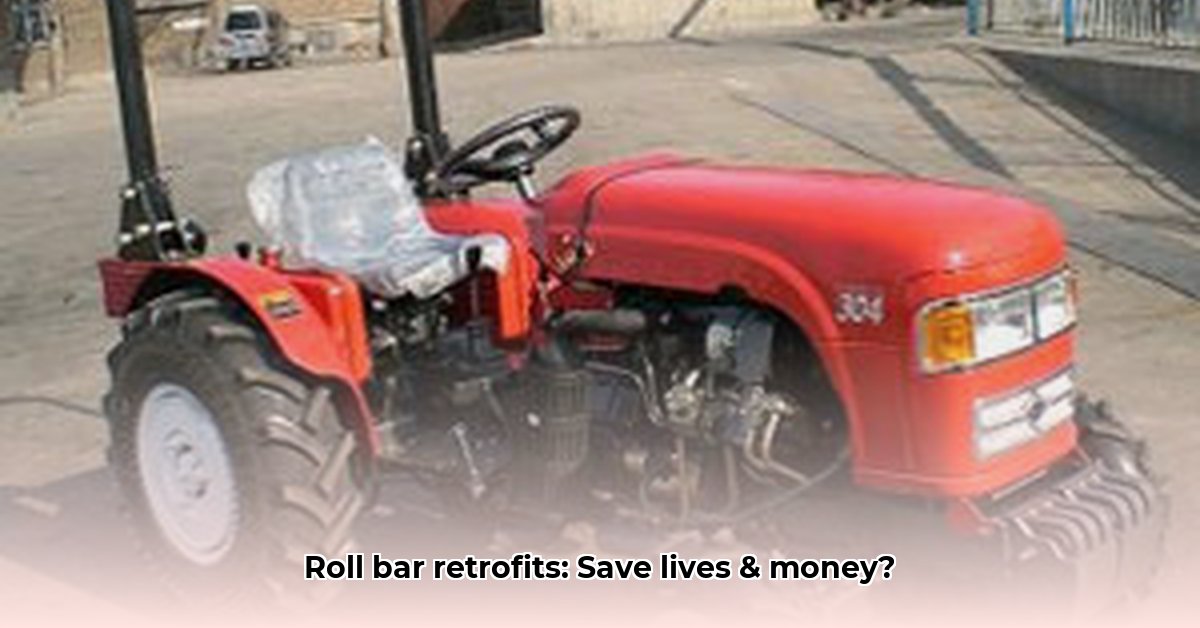
Tractor Roll Bar Retrofits: A Vital Investment in Farm Safety
Farming is inherently dangerous, and tractor rollovers represent a significant source of serious injury and death. Rollover Protective Structures (ROPS), essentially roll bars for tractors, offer a proven, effective solution. While the life-saving benefits of ROPS are widely acknowledged, the effectiveness of government programs promoting their installation varies dramatically across states, highlighting a critical need for improvement in farm safety initiatives. This article analyzes the successes and shortcomings of these programs, explores the cost-effectiveness of ROPS retrofits, and provides actionable steps for farmers, policymakers, and insurance professionals to enhance farm safety. For more information on ROPS, visit this helpful resource: ROPS information.
A State-by-State Snapshot: Program Effectiveness Varies Widely
Studies consistently demonstrate that ROPS significantly reduce serious injuries and fatalities from tractor rollovers. However, access to these life-saving devices is far from uniform. States like New York have implemented successful programs offering financial incentives for ROPS installation, resulting in demonstrably fewer accidents. Conversely, other states, such as Illinois, lack comparable comprehensive support, leading to lower adoption rates and a higher incidence of preventable tragedies. This disparity underscores the urgent need for nationwide consistency in farm safety initiatives. Factors contributing to this uneven landscape include funding levels, outreach effectiveness, and eligibility criteria differences.
Isn't it alarming that preventable deaths continue due to inconsistent access to proven safety technology? The data clearly shows the need for more widespread ROPS adoption.
Cost-Benefit Analysis: ROPS Installation is a Sound Investment
Investing in farm safety isn't merely ethical; it's fiscally prudent. ROPS installation offers considerable long-term cost savings. Reduced accident rates translate to lower medical expenses, decreased downtime, and reduced insurance premiums. The initial investment in ROPS is often quickly offset by these benefits. This is akin to buying insurance – a critical component of managing risk in the agricultural sector.
Obstacles to Widespread ROPS Adoption: Addressing the Challenges
Despite the undeniable advantages of ROPS, several hurdles impede their widespread adoption. The variable success of state rebate programs is a primary concern, largely due to funding differences, outreach strategy effectiveness, and inconsistent eligibility requirements. Reaching farmers, especially those with older equipment, is crucial. Some farmers may be hesitant due to perceived costs, lack of awareness, or distrust in government programs. A multifaceted strategy is needed to overcome these barriers.
Actionable Steps: A Coordinated Effort for Enhanced Safety
To significantly improve farm safety and increase ROPS adoption, we require a coordinated effort among all stakeholders. The following steps present practical approaches for each involved party:
1. For Farmers:
- Research state and local ROPS rebate programs.
- Assess the safety of your equipment.
- Prioritize safety upgrades and advocate for better safety regulations and increased funding.
2. For State Governments:
- Evaluate the effectiveness of current ROPS programs.
- Allocate sufficient funds to these crucial programs.
- Develop and implement targeted outreach campaigns.
3. For the Federal Government:
- Provide financial and technical support to state programs.
- Consider establishing national safety standards.
- Invest in research exploring innovative safety technologies.
4. For Insurance Companies:
- Offer premium discounts for farmers with ROPS installed.
- Develop risk assessment models incorporating ROPS data.
5. For Agricultural Organizations:
- Develop educational programs on ROPS benefits.
- Advocate for policies supporting safer farming practices.
Conclusion: A Collective Commitment to Farm Safety
ROPS are indispensable for improving farm safety. A collaborative effort from farmers, state and federal governments, insurance providers, and agricultural organizations is vital for their widespread adoption. Investing in ROPS offers significant returns—financially and in terms of protecting lives. By pursuing unified strategies, we pave a pathway towards safer and sustainable agricultural practices The future of farm safety relies on this collective commitment to action. This is not just about numbers; it's about saving lives and supporting the livelihoods of those who feed us.